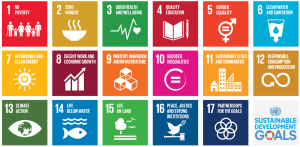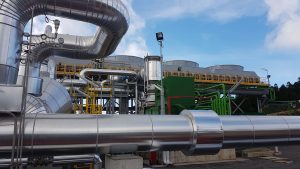By Emiel van Puffelen, WUR
A sustainable world
SEFI 2017 was an inspiring conference and the sessions showed a consensus that our engineers are needed to make the world sustainable. They will have to make smart designs to reach the 17 United Nation goals as shown below. To reach these goals engineering disciplines will have to contribute to solutions. Life science engineers have a role to play in almost all goals.

UN sustainable development goals
Sustainability in education
Universities are busy integrating sustainability in the curriculum and courses and are fitting in sustainability courses. They are often intrinsically motivated to do so. A comparison between the Danish and French situation shows that adding push factors for sustainability in education within the accreditation process helps as well. The Technische Universität Berlin even showed that you can integrate sustainability in the curricula while doing the regular work needed for the BA/MA structure.
A literature review (2009-2017) by Hull and Carlo Cattaneo of University-LIUC, shows a change in the interests in Teaching Sustainability. At first there was a need to present a systemic and holistic vision of sustainability. The next phase focussed on the development of instruments to construct a curriculum. And the final shift was geared towards the development of measures to quantify the Sustainability content or learning outcomes.
If you like to know more about sustainable electricity production the Mount PICO pilot geothermal power plant is worth a mouse click. It has been operational for 3 months and is already supplying 12% of the electric power of Terceira island. The output will considerably increase in the near future. The SEFI visit to the plant cured me from a narrow minded focus on wind and solar energy.
Design of active Learning
Lewas Lab offers a combination of active education and research by measuring water quality and quantity data on the Virginia Tech campus. This option and many others can be part of course design. Wageningen University is successful in designing blended courses for active learning; and my SEFI article describes the steps to be made.
The changing work field
Another consensus at the conference: our students will have jobs that do not exists yet or differ significantly from those in the present world. The skills and competency for future engineers (our students!) are listed in a literature review from Aalborg University and Itasca Community College (USA). On the list are skills such as multi- and interdisciplinary teamwork and systems thinking. This also asks for learning environments in which students are able and challenged to play an active role, as is the case in problem based, project organised learning.
The proceedings offer this and many other inspiring articles. The 4TU.CEE contributions can be found on the 4TU.CEE website.





